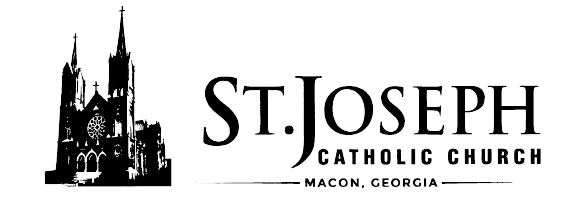Our Church
Our Mission
Saint Joseph Catholic Church is a community of the people of God that hears and responds to the call of our Lord Jesus Christ to “love one another as I have loved you.” Strengthened by the Sacraments, inspired by the word of God and united in Tradition, we live our faith and morals in our everyday lives. We identify, develop and utilize our time, talent, and treasure for the service of God and our neighbor.
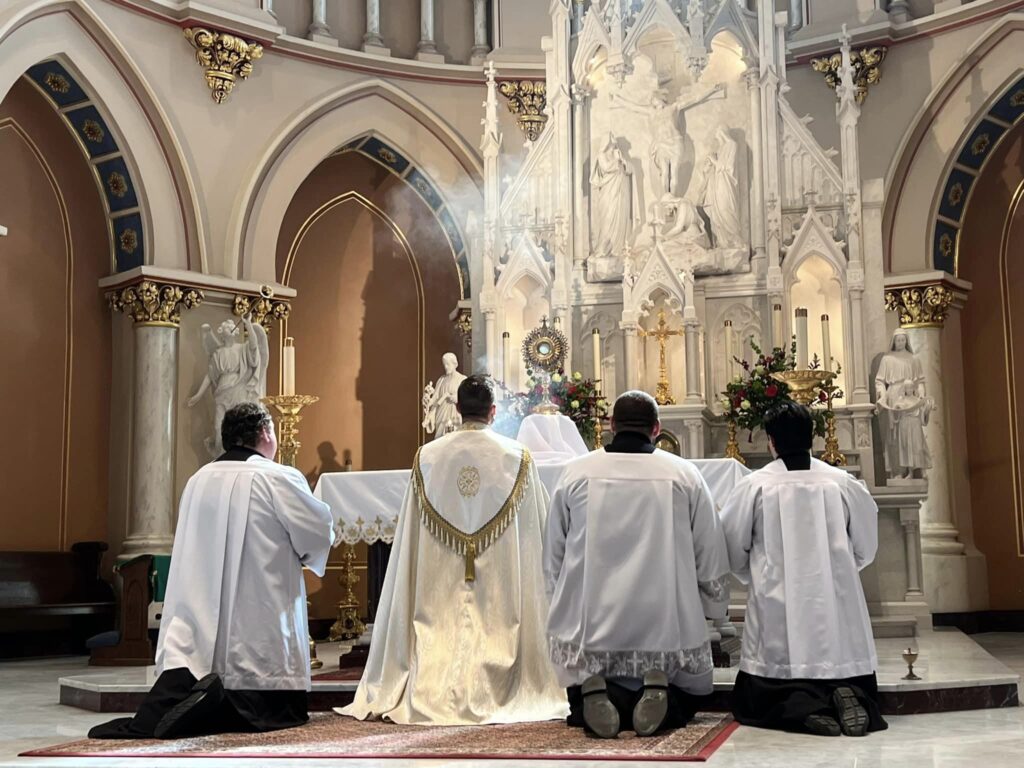
If architecture may be fittingly described as frozen music, St. Joseph’s Church, to be dedicated today, is a symphony.
Macon Telegraph - November 15, 1903
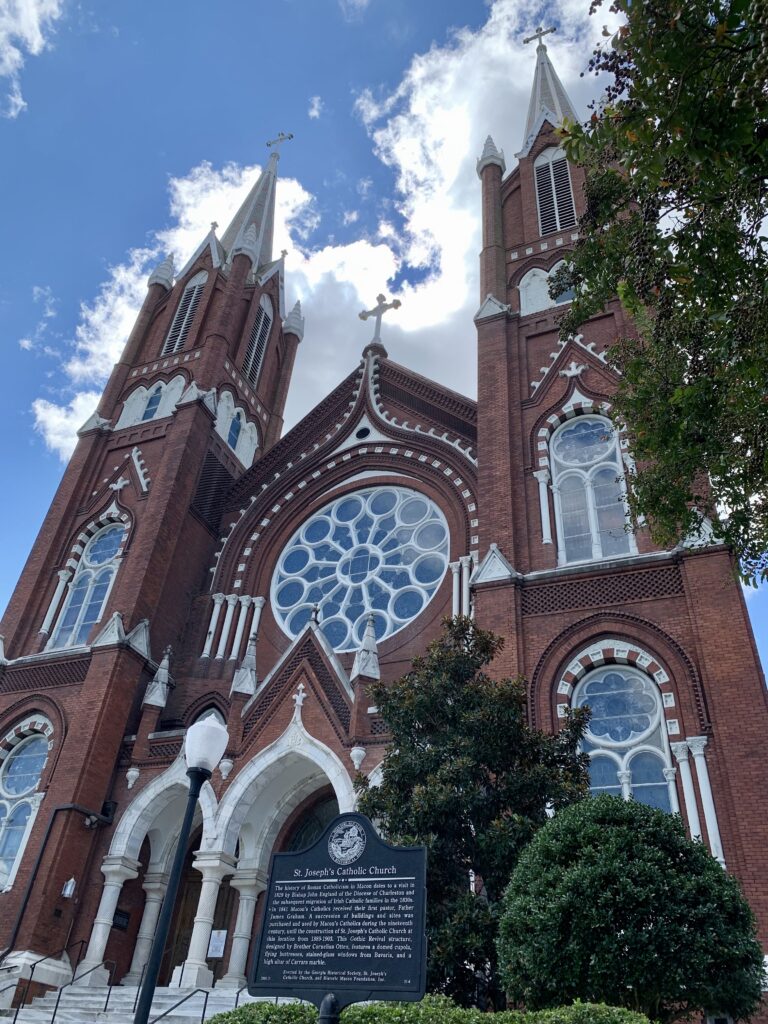
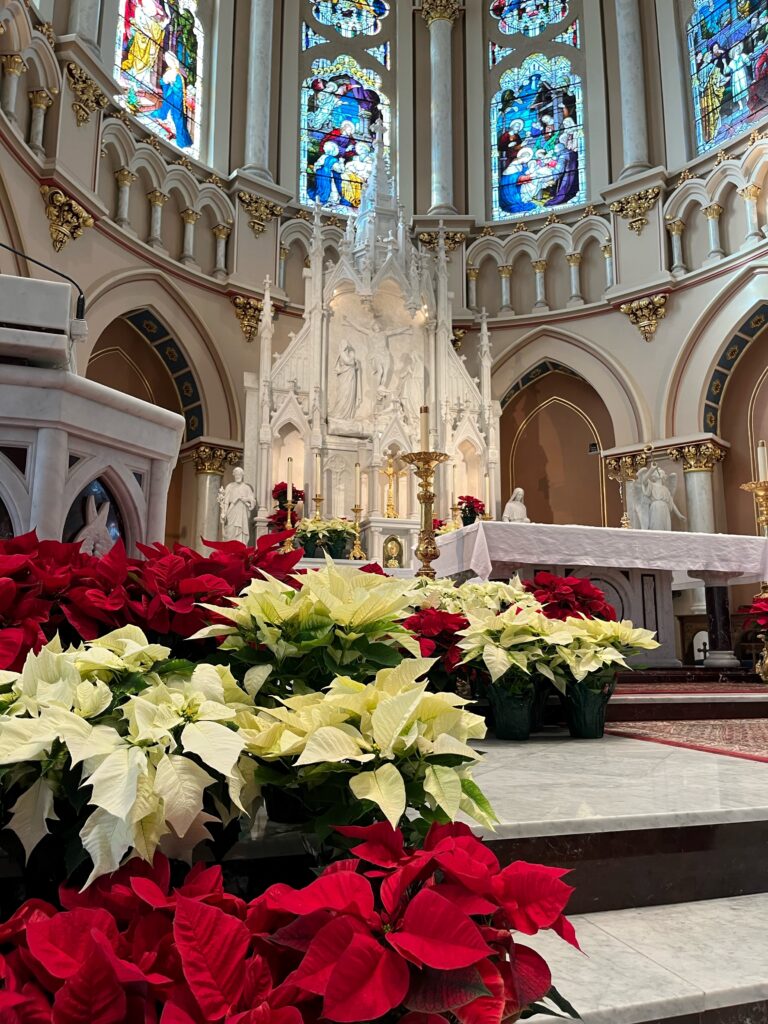
Rising 200 feet into the air, the twin cross-topped spires of St. Joseph’s Catholic Church add great beauty to the skyline of downtown Macon.
This lovely old Romanesque, Neo-Gothic church was the realization of an earlier dream of 50 Catholic parishioners and their first priest, Father James Graham. In 1841, this small group of Catholics had bought a Presbyterian church and started the first Catholic parish in Macon, a town incorporated as a city only seventeen years earlier.
Actually, Catholic activity in the Middle Georgia area had its beginning in 1540 when Franciscan friars, accompanying the Spanish explorer, DeSoto, baptized two Indian boys on the banks of the Ocmulgee River. This was the first known Christian Baptism east of the Mississippi River.
There were twelve pastors after Farther Graham before another church was acquired. Father James O’Neill, the pastor in 1865, found that the church was too small for his growing congregation and purchased another Presbyterian church, this time on Fourth Street between Walnut and Ocmulgee (now Riverside Drive). The Bishop of Savannah sent pastors to St. Joseph’s Church until 1887, when he asked Jesuits to come from New Orleans to Macon to staff St. Joseph’s and to take over the school which the Diocese had begun in 1876, Pio Nono College. One Macon thoroughfare (Pio Nono Avenue) is a reminder of the school named after Pope Pius IX. (Pio Nono is Italian for Pius Ninth).
In 1888, one year after coming to Macon, the Jesuits were determined to build a church more worthy of the Lord of Hosts. The site of the present church was selected and the negotiations were completed when Father Joseph Winkelried, S.J., became pastor. The foundation of the church was laid in August, 1889. On June 16, 1892, the basement of the church, which was used for services until 1903, was blessed by Bishop Becker. Fourteen years after work on St. Joseph’s Church had been started, the edifice was dedicated on November 15, 1903. Six bishops from various parts of the country assisted at the ceremony. The November 15, 1903, edition of the Macon Telegraph began its coverage of the Church’s dedication with,
In its centennial edition in May, 1923, the Macon Telegraph and News reported:
“(T)he Macon Catholic Church is one of the finest in the South, a lasting monument to the generosity and faith of the people of Macon. It sits on the crown of a hill overlooking the city, and yet it is practically in the business section of the city. No church in the South has a more ideal location. It throws its spires 200 feet into the air, and the crosses which they support can be seen from every part of the city and in the county for miles around.”
There are over 60 stained glass windows with their many symbols and pictures of the angels and saints and scenes from the Bible. Almost all are from the Mayer workshops in Munich, Bavaria, Germany. The white marble carvings, statues, and altars are from Italian quarries. The columns, though, are all from Georgia’s own quarries.
There are two side altar-shrines and the high altar (the largest) is located in the center. Almost immediately over the high altar is a great dome, the apex of which is 125 feet above the floor. The massive columns inside the church rise to a distance of 80 feet to meet the roof.
The original organ, a three manual Pilcher instrument, was installed in 1903 by Pilcher’s & Sons of Louisville, Kentucky. After 82 years the organ had deteriorated, and in 1985 the Schlicker Organ Company of Buffalo, New York, was engaged to build the new organ. Schlicker agreed to utilize portions of the façade and the console, as well as some of the pipes from the Pilcher organ. A Mass of Thanksgiving and Dedication of the Organ was celebrated on the Feast of St. Augustine of Canterbury, May 27, 1986. At the top of the church’s left tower (as you face the church from Poplar Street) there are three massive bronze bells. They were installed in 1903. These bells are called the Jesus, Mary, and Joseph bells and are rung at 6:00 a.m., 12:00 noon, and 6:00 p.m. each day to commemorate the Lord’s Incarnation at Nazareth. They are also rung at the conclusion of Masses on feast days, and at the conclusion of wedding and funeral services.
Under the leadership of Monsignor John Cuddy, the parish embarked on a major capital improvements program in 2002. This ambitious project was aimed at renovating the 1950’s school building and restoring the church.
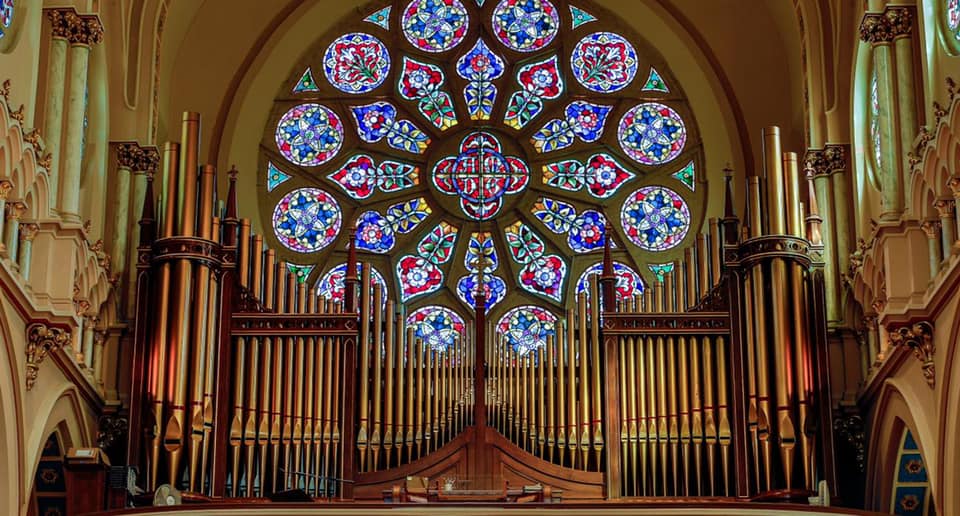

Since the magnificent church structure was built to house the altar where the Most Holy Sacrifice of the Mass is celebrated, it was felt that the altar area (sanctuary) needed to be restored as well. After the Second Vatican Council, the magnificent old high altar was no longer used for the celebration of Mass. At first a simple wooden altar was placed in front of it. Later in the early 1970’s a similar looking marble altar replaced the wooden one. However, this marble altar in no way complimented the architectural integrity of the building or the old altar behind it. In 2005, Rolf Rohn and Associates designed a new altar table to replace the 1970’s era altar. It is modeled after the old high altar and is on the same level as the old high altar-table. A new ambo (pulpit) was commissioned with symbols of the four Evangelists on its facade. New priest and deacon chairs were commissioned as well. The new altar was dedicated by Bishop J. Kevin Boland on July 1, 2006.
As well, the side chapels have been redecorated. The Sacred Heart Chapel side of the Church contains stained glass with images of Jesus and is better suited to meditation as it is away from the side entrance with its traffic.
Our Lady’s Chapel houses an ambry for the storing of the Holy Oils, that of catechumens, sick and sacred chrism. The original baptismal font has been placed in front of this chapel and elevated, along with the paschal candle. The Blessed Virgin Mary is an image of the Church. Along with the font being placed in close proximity to the side door and in front of the image of the Blessed Mother, the sacramental celebration of welcoming new members into Christ’s Church is made clear.
The priests and parishioners of St. Joseph parish warmly welcome everyone in Christ’s name.
